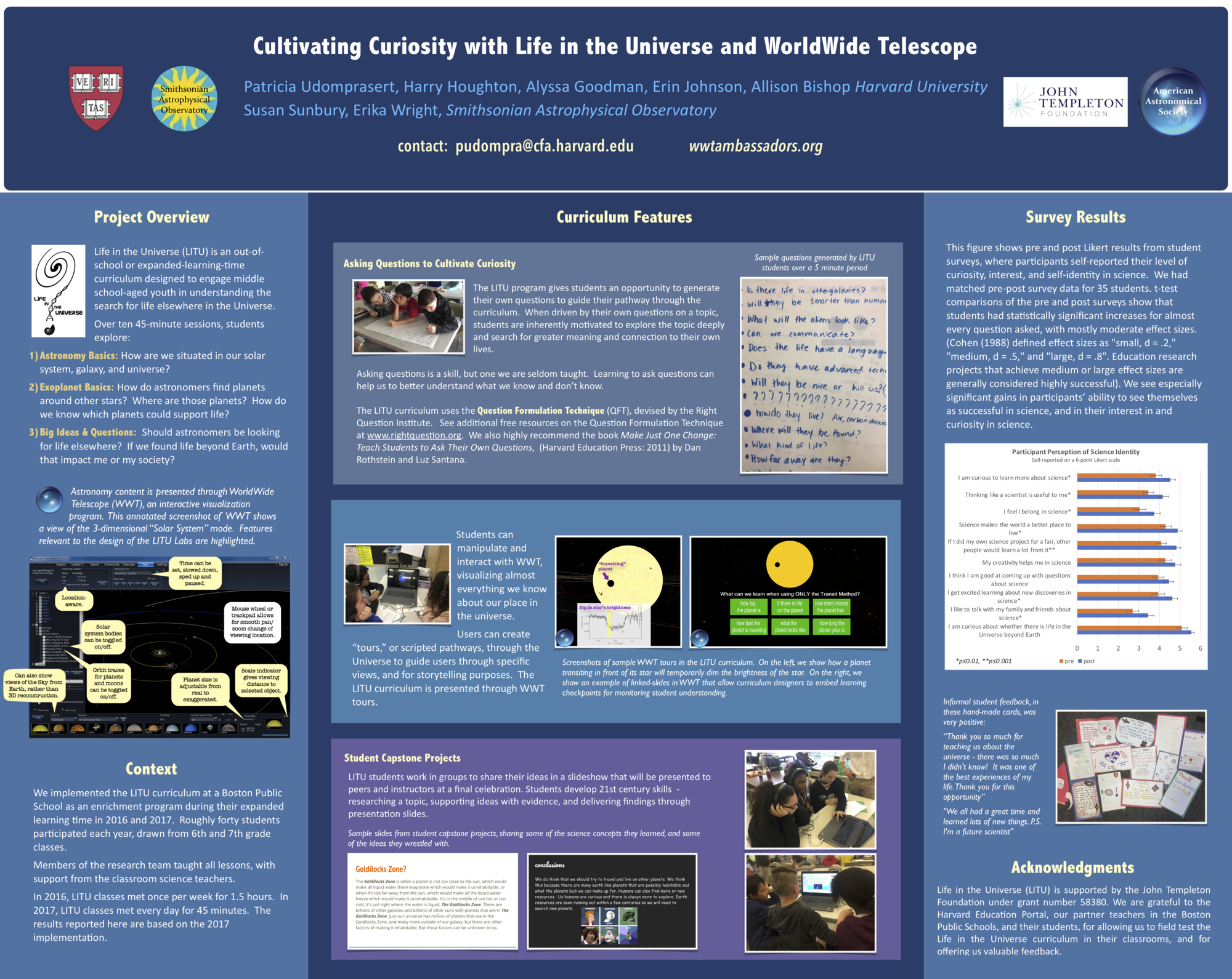How can we encourage middle school students to ask big questions about life outside their own immediate circles of interaction and expand that sense of wonder to include their home planet, solar system, and place in the universe? The JTF-funded Life in the Universe (LITU) project developed and tested an out-of-school model for engaging young learners in scientific processes while cultivating their curiosity around “Big Questions.” LITU offers an opportunity for students to estimate the likelihood of Life elsewhere in our Universe, using real methods of modern science applied to up-to-the-minute data about humans’ knowledge of planets outside our Solar System. The labs encourage middle school learners to "problematize" the activities and methods scientists use to make sense of our Universe in the context of a guided inquiry lab where they will explore the question, "Could humans (ever) communicate with sentient life on other planets?" (NS-58380)
Copyright © 2024 The President and Fellows of Harvard College | Accessibility | Digital Accessibility | Report Copyright Infringement


